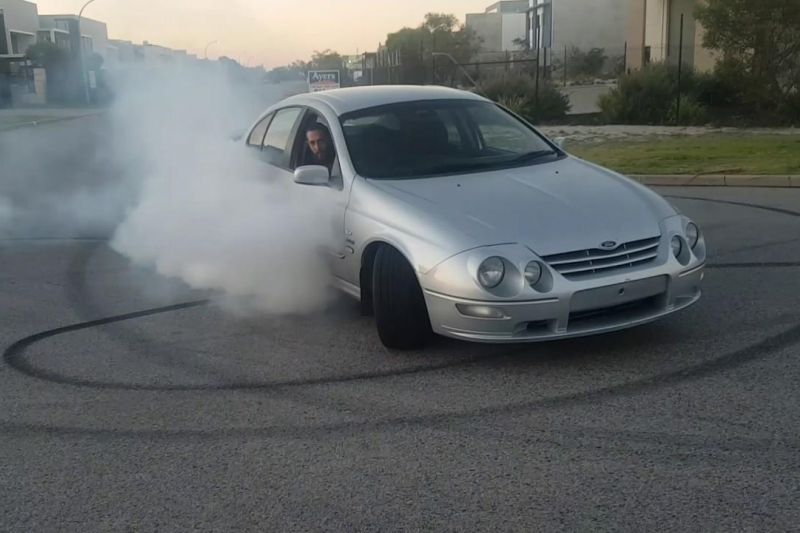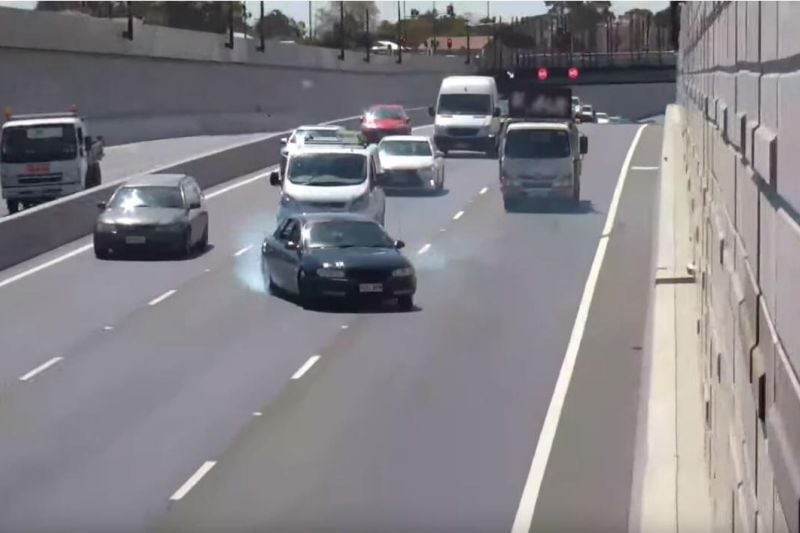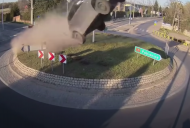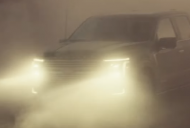Doing a burnout doesn’t make you cool, it makes you a fool.
- Doing a burnout on public roads is a dangerous act
- It falls under Negligent Driving in most jurisdictions
- Fines, demerit points, car confiscation – and prison time – may be imposed in some instances
You can be fined hundreds of dollars, and lose points from your licence if you are caught doing a burnout in your car. It’s a dangerous act, and is considered negligent driving in most jurisdictions across Australia, and may fall under the strict anti-hooning laws imposed in some jurisdictions.
We’ve all seen those videos of Mustangs (it is mainly Mustangs, admit it) leaving car meets, trying to do a burnout and crashing into something – or someone – due to lack of skill, if not lack of bravery.
A burnout, for the uninitiated, is the act of trying to break traction between the tyres and the surface below. In some places, the act is called a peel out, brakestand or power brake, with the objective of keeping the vehicle relatively stationary while spinning its tyres. That leads to friction, heat, smoke, noise, and often, danger.
As a result, Australia has pretty strict laws in each of the localities regarding burnouts, and hooning more generally.
Here’s a rundown of what a burnout might cost you in terms of demerit points and financial penalties across the country.
NSW: General driving offences, Negligent Driving, Sec 116 (1) states that a burnout in offence that could result in a $697 fine and 3 demerit points.
If a police officer assesses at their discretion that you could also be penalised for the broader offence of negligent driving – that being “driving without the due care and attention reasonably expected of a driver” that “puts you, other drivers and the public at risk, and can result in serious injury or death” – then you may face a further 3 points and $464.
Those are the best-case scenario outcomes, of course.
NSW Transport states that “many crashes” on the state’s roads happen each year due to negligent driving, and if you were to “drive at a speed or in a manner dangerous to the public, or cause death or injury due to negligent driving, penalties include large fines, loss of licence, prison.”
Those may include a first-time offence fine of $3300 and a maximum 18-month prison term, with potential loss of licence for life.
Victoria: Big fines and potentially life-altering implications for drivers in Victoria who go against the state’s anti-hooning laws.
“In addition to the seizure or forfeiture of the vehicle, if found guilty of a hoon driving offence, the courts can impose a fine of up to 240 penalty units (in excess of $28,000) and/or a period of imprisonment of up to two years. The driver will also incur any demerit points and/or licence loss penalties applying to the underlying offence.”
Further: “If a person is found guilty of three hoon-related offences inside three years, their vehicle can be permanently forfeited by the court.”
Queensland: The state’s hoon laws are heavy. According to the QLD government’s hooning legislation, something like a burnout could be met with a fine in the thousands of dollars:
- Penalties vary for different hooning offences. For example, driving in a way that makes unnecessary noise or smoke carries a maximum fine of 20 penalty units ($3096) while the most serious offences, such as careless driving—also known as driving without due care and attention—or street racing, carry a maximum fine of 40 penalty units ($6192) or 6 months in jail.
Queensland police can impound, immobilise or confiscate vehicles involved in hooning offences under the Police Powers and Responsibilities Act 2000.
There are different classifications of hooning, as you’d expect, and doing a burnout is unlikely to get your car confiscated, but you could face a big fine and demerit points.
South Australia: The South Australian driver’s handbook has a couple of points on “Driving with attitude (hoon driving)”:
- Misuse of a motor vehicle (police may also wheel clamp or impound an offender’s vehicle): under RTA s44B(3), there will be a court imposed penalty , and 4 demerit points.
- Driving recklessly or at a speed or in a manner dangerous to the public (police may also wheel clamp or impound an offender’s vehicle: under RTA s46(1), there will be a court imposed penalty and 6 demerit points.
Western Australia: In WA, the police are keen to “send a strong message to irresponsible drivers that antisocial driving behaviour will not be tolerated”.
Examples of hoon driving, according to WA police, includes:
- Intentionally causing tyres to lose traction
- Causing a vehicle to make excessive noise or smoke
- Exceeding the speed limit by 45 km/h or more (e.g. travelling at more than 155 km/h in a 110 km/h zone)
- Engaging in a race or speed trial on a public road or in a public space
“Vehicles … can be impounded under the Road Traffic Act 1974. The WA Police Force also has the power to impound the vehicles of drivers who exceed the speed limit by 45 km/h or more. Those who have their vehicles impounded by police are responsible for all costs including towing and storage.”
There is a specific fine relating to doing a burnout – it’s a maximum fine of $600 and 3 demerit points. However, P-plate licence holders will have their licence cancelled for three months.
Tasmania: The island state has some of the best roads and some of the most isolated stretches of blacktop, but don’t go thinking that you can head there and hoon. If you are caught driving in a risky or dangerous manner, you could face imprisonment.
The offences listed at the Police Tasmania site includes: reckless or dangerous driving; street racing or time trials; making unnecessary and unreasonable noise; an exhibition of speed, acceleration or loss of traction (burn-outs or donuts); speeding at, or in excess of, 45 kilometres per hour over the speed limit; driving while disqualified, when caught on a second or subsequent occasion; evading police under the Police Powers (Vehicle Interception) Act 2000; trespassing on the property of another with that vehicle, or refusing to leave an area, or returning to an area, after being told by a police officer to leave.
The consequences, according to the site:
- The vehicle may be clamped or impounded by police for at least twenty-eight days
- You may be arrested
- You may be required to appear in court at a later date
- If convicted, you may be fined a large sum and will be ordered to pay a special compulsory penalty of $600 by the court
- You may lose your licence for up to two years
- You may face imprisonment for up to three months
Your car could be clamped or confiscated, too.
ACT: In the ACT, burnouts fall under the umbrella of “Anti-social Driving”, according to the Territory Police.
“Anti-social driving is a form of intimidating driving behaviour; it can include speeding, burnouts, tailgating, menacing driving and street racing. These illegal activities may result in the loss of licence, heavy fines, the seizing of vehicles and potentially imprisonment.”
Police can and will seize vehicles involved in street racing, burnouts, speed trials and menacing driving – and you could lose your wheels for 90 days for the first offence.
The minimum penalty imposed for negligent driving in the ACT is $632 and 3 demerits, according to the Road Transport (Offences) Regulation 2005.
Northern Territory: The north has a pretty solid anti-hooning mindset, but is arguably a bit less lenient in first-offence instances.
Under the Northern Territory driving offences and penalties framework, hooning includes any of the following:
- Participating in unauthorised street races and speed trials
- Burnouts
- Damaging the surface of a road or public place
Your vehicle could be impounded or immobilised for 48 hours, and you may receive an infringement notice – if it’s your first offence, the penalty is $220 and 3 demerits. If you’re caught again within a two-year period, more fines or imprisonment may apply, and so on.
Another potential lenient outcome is the simpler fine, “Drive in disorderly manner or cause undue noise or smoke,” which only hits offenders with a $60 payment fee.
Not intended as legal advice. Check with the relevant roads authority in your state or territory.












